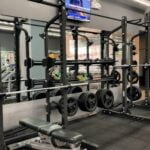When it comes to personal fitness, safety should always be a top priority. Understanding the potential risks and dangers of certain exercises is crucial in order to prevent injuries and promote overall well-being. In this article, we will explore the importance of safety in personal fitness and discuss three specific exercises that are not allowed due to the potential harm they can cause.
In the world of fitness, it is common to focus on achieving physical goals or pushing oneself to the limit. However, it is equally important to prioritize proper form and technique in order to avoid unnecessary harm. The wrong exercise can lead to serious injuries that may hinder progress and even require medical attention. By understanding which exercises to avoid and why, individuals can ensure a safer and more effective workout regimen.
In the following sections, we will delve into the potential risks associated with certain exercises, as well as provide alternative options that are safer but still effective. Additionally, we will emphasize the significance of maintaining proper form in all workout routines to minimize the risk of injury. By gaining insight into these key aspects of personal fitness, individuals can take proactive measures to exercise safely and maximize their results.
The Risks of Incorrect Exercises
When it comes to personal fitness, safety should always be the top priority. Understanding the potential risks of certain exercises is essential in order to prevent injuries and promote overall well-being. Incorrect exercises can pose serious dangers to individuals, and it is important to be aware of what exercises should be avoided in personal fitness routines.
There are three exercises that are not allowed in personal fitness due to the potential risks they pose. These exercises include:
- 1) Behind-the-Neck Lat Pulldowns: This exercise involves pulling a bar behind the neck from an overhead position. The potential risk of this exercise is putting excessive strain on the shoulder joints and rotator cuff muscles, which can lead to injury.
- 2) Upright Rows with a Barbell: Upright rows involve lifting a barbell or weight in front of the body, close to the torso. This exercise can place unnecessary stress on the shoulder joints and may lead to impingement syndrome.
- 3) Full Sit-Ups with Straight Legs: Performing full sit-ups with straight legs can put significant strain on the lower back and spine. This can lead to discomfort or injury in these areas over time.
It is important to note that these exercises are not allowed in personal fitness because of their potential to cause harm when performed incorrectly or with improper form. It is crucial for individuals to steer clear of these exercises in order to minimize any risks of injury.
In place of these risky exercises, there are alternative movements that individuals can incorporate into their fitness routines. These safer alternatives include:
- 1) Pull-Ups or Assisted Pull-Ups instead of Behind-the-Neck Lat Pulldowns
- 2) Lateral Raises or Front Raises instead of Upright Rows with a Barbell
- 3) Partial Sit-Ups or Crunches instead of Full Sit-Ups with Straight Legs
By opting for these alternative exercises, individuals can still work on targeting similar muscle groups without putting themselves at risk for potential injury. Prioritizing safety and proper form in personal fitness practices is crucial for long-term physical health and well-being.
Exercises to Avoid
Exercise #1: CrossFit Kipping Pull-Ups
CrossFit Kipping Pull-Ups are a popular exercise in the CrossFit community, but they are not allowed in personal fitness due to the high risk of injury. This exercise involves using a swinging motion to gain momentum and propel oneself up to the bar.
The potential risks of this exercise include shoulder injuries, strains, and overuse injuries. The kipping motion can put excessive stress on the shoulder joint and can lead to long-term damage if not performed with proper form.
Exercise #2: Behind-the-Neck Lat Pulldown
The behind-the-neck lat pulldown is another exercise that should be avoided in personal fitness due to its potential risks. Performing this exercise requires extreme flexibility in the shoulders and can lead to impingement or rotator cuff injuries if not executed correctly. The position of the arms during this exercise puts unnecessary strain on the shoulder joint, increasing the risk of injury.
Exercise #3: Upright Rows
Upright rows involve lifting a barbell or dumbbells close to the body, bringing them up towards the chin. This exercise has been shown to cause internal impingement of the shoulder joint, leading to pain and possible injury. Additionally, performing upright rows with improper form can cause strain on the wrists and elbows.
It is important for individuals engaging in personal fitness to avoid these exercises in order to prevent potential injuries and long-term damage.
For individuals looking for alternative exercises that are safer while targeting similar muscle groups, alternative exercises such as bent-over rows, wide-grip lat pulldowns, or front raises for shoulders can be considered. These alternative exercises provide similar benefits without the added risk of injury associated with the previously mentioned exercises.
By prioritizing safety and proper form, individuals can achieve their fitness goals without compromising their long-term health and well-being.
Exercise #1
When it comes to personal fitness, safety should always be the top priority. Certain exercises can pose a higher risk of injury when not performed with proper form or under the guidance of a professional. One exercise that is not allowed in personal fitness due to its potential risks is the behind-the-neck lat pulldown.
The behind-the-neck lat pulldown involves pulling a bar down behind the head towards the upper back. This exercise primarily targets the muscles of the upper back and shoulders.
However, it also puts a significant amount of strain on the shoulder joints and rotator cuff muscles, which can lead to serious injury if not executed correctly. Performing this exercise with improper form or using too much weight can cause unnecessary stress on the shoulder joints and may result in strains, sprains, or even tears.
It is crucial for individuals engaging in personal fitness to avoid the behind-the-neck lat pulldown and opt for alternative exercises that target the same muscle groups without risking injury. For example, performing standard front lat pulldowns or using resistance bands for similar movements can provide an effective workout while minimizing the risk of shoulder injuries. Remember, always prioritize safety over intensity when it comes to personal fitness routines.
Exercise #2
One of the exercises not allowed in personal fitness is the behind-the-head lat pull-down. This exercise involves pulling a weighted bar down behind the head to work the upper back and shoulder muscles. The potential risk of performing this exercise is putting excessive strain on the shoulder joint and rotator cuff, which can lead to injury.
The unnatural position of the shoulders during this movement can cause impingement and increase the risk of developing shoulder problems. Additionally, individuals with limited shoulder mobility may experience difficulties in performing this exercise with proper form, further increasing the risk of injury.
To avoid the risks associated with behind-the-head lat pull-downs, there are alternative exercises that target the same muscle groups without compromising safety. One alternative is the front lat pull-down, where the bar is pulled in front of the body instead of behind the head.
This variation allows for a more natural range of motion and reduces strain on the shoulders. Another alternative exercise is the seated row, which effectively targets the upper back muscles while providing better support for the shoulders and reducing the risk of injury.
It is important to prioritize safety and wellbeing when engaging in personal fitness activities. Understanding which exercises to avoid, such as behind-the-head lat pull-downs, can help prevent unnecessary injuries and promote a healthier workout routine. By opting for safer alternatives and focusing on proper form, individuals can still effectively target their muscles while minimizing the risk of harm during their fitness journey.
| Exercise | Potential Risks |
|---|---|
| Behind-the-Head Lat Pull-Down | Excessive strain on shoulder joint & rotator cuff; increased risk of shoulder problems; difficulties in performing with proper form |
| Front Lat Pull-Down | Natural range of motion; reduced strain on shoulders; decreased risk of injury compared to behind-the-head variation |
| Seated Row | Effective targeting of upper back muscles; better support for shoulders; reduced risk of injury compared to behind-the-head lat pull-downs |
Exercise #3
One of the exercises that are not allowed in personal fitness is the behind-the-head lat pulldown. This exercise involves sitting at a lat pulldown machine and pulling the bar down behind your head to work your back muscles.
However, this movement can put a significant amount of stress on the shoulder joint and rotator cuff, increasing the risk of injury. The potential risks of performing the behind-the-head lat pulldown include shoulder impingement, strain on the rotator cuff, and muscle imbalances.
When performing the behind-the-head lat pulldown, individuals may also compromise their spinal alignment as they pull the bar down, leading to potential neck and upper back injuries. Additionally, individuals with limited shoulder mobility may find it difficult to perform this exercise correctly without putting excessive strain on their shoulders and neck. It is important to recognize these potential risks and avoid performing this exercise in personal fitness routines to prevent unnecessary injuries.
Instead of the behind-the-head lat pulldown, individuals can opt for the traditional front lat pulldown or assisted pull-ups to effectively target their back muscles without compromising their shoulder health. These alternative exercises allow for a safer range of motion and reduce the risk of shoulder injuries. By choosing safer alternatives, individuals can still achieve effective results in their back muscles while prioritizing safety in their personal fitness routine.
Alternative Safe Exercises
When it comes to personal fitness, it is crucial to prioritize safety above all else. This includes being aware of the exercises that should be avoided in order to prevent potential injuries and accidents. While certain exercises may be popular or widely practiced, they can pose significant risks to individuals if not performed correctly. In this section, we will explore alternative safe exercises that can be done instead of the top three exercises that are not allowed in personal fitness.
1. Swimming: Swimming is a fantastic alternative exercise for individuals looking to avoid high-impact activities such as jumping jacks or box jumps, which can put excessive strain on the joints. Additionally, swimming provides a full-body workout while significantly reducing the risk of injury due to its low-impact nature.
2. Yoga: For those seeking an alternative to heavy weightlifting exercises that may cause strain or overexertion, yoga offers a gentle yet effective way to improve flexibility, strength, and balance. Practicing yoga regularly can also aid in stress reduction and promote overall well-being.
3. Cycling: Instead of engaging in exercises that require awkward twisting or bending movements such as sit-ups or crunches, cycling provides a low-impact cardiovascular workout that is gentle on the joints while still effectively targeting the lower body muscles.
By incorporating these alternative safe exercises into your personal fitness routine, you can minimize the risks associated with potentially harmful activities while still achieving your fitness goals. Remember to prioritize proper form and technique in any exercise you choose, and always consult with a professional trainer or instructor for guidance on safely performing these alternative exercises.
Importance of Proper Form
Proper form is essential in any exercise routine, as it not only maximizes the effectiveness of the workout but also helps prevent injuries. When it comes to personal fitness, maintaining correct form is crucial to ensure safety and avoid potential risks. Whether you’re lifting weights, doing bodyweight exercises, or engaging in cardiovascular activities, focusing on proper form can make a significant difference in your overall well-being.
Understanding the Importance of Proper Form
Executing exercises with proper form involves maintaining the correct posture and alignment throughout the movement. This means paying attention to body positioning, joint alignment, and movement patterns to avoid unnecessary strain on muscles and joints. It also ensures that the targeted muscles are being engaged effectively without compensating with other muscle groups.
The Significance of Correct Form in Preventing Injuries
One of the primary reasons for emphasizing proper form in personal fitness is injury prevention. Incorrect form can lead to strains, sprains, muscle imbalances, and even more severe injuries such as herniated discs or ligament tears. By practicing proper form, individuals minimize the risk of these injuries and create a foundation for long-term physical health and fitness.
By prioritizing correct form during workouts and exercises, individuals not only reduce their risk of injury but also enhance their overall performance and results. Moreover, maintaining proper form promotes greater body awareness and mindfulness during physical activities. This heightened awareness can carry over into everyday movements and activities, further reducing the risk of accidents or injuries.
Conclusion
In conclusion, the importance of safety in personal fitness cannot be overstated. It is crucial to understand the potential risks of certain exercises and how they can lead to injuries if not performed correctly. As we have explored, there are three exercises that are not allowed in personal fitness due to their high risk of injury. These exercises include (keyword: what three exercises are not allowed in personal fitness).
Understanding the risks and potential dangers of these exercises is essential for anyone engaging in personal fitness practices. By avoiding these risky exercises and opting for safer alternatives, individuals can significantly reduce their chances of sustaining injuries during their workouts. It is also important to emphasize the significance of proper form when performing any type of exercise. Maintaining correct form is key in preventing injuries and ensuring that each movement is executed safely.
In summary, prioritizing safety in personal fitness practices is paramount. By being aware of the exercises to avoid and choosing alternative safe options, individuals can enjoy the benefits of exercise while minimizing the risk of injury. Remembering to focus on proper form and technique will further contribute to a safe and effective workout routine. Ultimately, exercising safely not only supports physical well-being but also contributes to long-term health and fitness goals.
Frequently Asked Questions
What Is the Rule of 3 for Exercise?
The rule of 3 for exercise is a simple guideline that suggests doing three different types of exercises in a workout routine. This helps to ensure a well-rounded approach to fitness and prevents boredom or overuse injuries.
What Are the 3 Main Types of Exercise?
The three main types of exercise are cardiovascular, strength training, and flexibility exercises. Cardiovascular exercises help improve heart health, strength training builds muscle and bone strength, and flexibility exercises increase range of motion and prevent injury.
What Is 3 3 3 Exercise?
The 3 3 3 exercise is a quick and efficient workout that involves doing 3 sets of 3 different exercises with no rest in between. This can be a time-saving way to fit in resistance training during a busy day, but it may not be suitable for beginners or those with specific fitness goals.

Passionate about providing useful information to anyone with an interest in the field of Personal Training, I strive to pass on to our readers quality information and to answer any questions about Personal Trainers, the work they do and how to become one.





